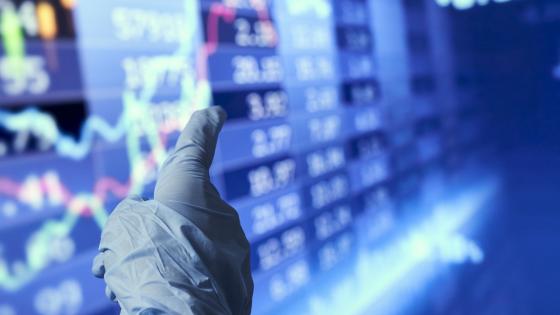There is now little doubt that stay-at-home orders are an important and necessary first step in mitigating the adverse health effects of a major pandemic such as Covid-19. However, such lockdowns also impose immediate economic costs, and thus the choice of implementing a lockdown and how long to remain in such a state are typically seen as a ‘health versus wealth’ trade-off. Policymakers agonise over the position they need to take in the continuum of choices available in the ‘health versus wealth’ spectrum. The decision of whether to impose a lockdown, and when and at what pace to reopen, becomes even more complicated when there is inadequate data on how successful containment efforts have been, for example due to inadequate testing.
Several papers explore the economic costs of imposing lockdowns of various intensity and duration (e.g. Gourinchas 2020, Fornaro and Wolf 2020, Baldwin 2020, Baldwin and Weder di Mauro 2020a, 2020b). However, an aspect of the issue that has not received sufficient attention is the possibility that, absent herd immunity, the economic costs of lockdowns, if not borne today, may be much larger in the future. The economy cannot function smoothly while an infection is affecting workers and consumers. Not only that, if the capacity of the health system is overwhelmed, lockdowns may be inevitable at a future point, potentially causing more damage to the economy. In other words, there may not be any real trade-off – lockdowns not only save lives, when properly implemented, they can also save the economy, and obviate the need for much harsher measures later if the infection continues unabated.1 This latter situation is exactly the prospect many US states are now facing. These states have experienced a resurgence of infections and are now in a worse situation than they were in when they first issued stay-at-home orders, because they lifted lockdown restrictions without adequate safeguards (e.g. testing competence) in place.
Against this backdrop, it is useful to know how the financial markets evaluate the costs and benefits of non-pharmaceutical interventions (NPIs) such as lockdowns. Financial markets do not explicitly take into account the ‘value’ of a human life; however, how the market responds to the adoption of NPIs at least gives a timely indication of how the shareholders weigh the net costs (current costs against the benefit of avoiding future costs) of intervention. Given that NPIs save lives, if they are also favoured by firms’ shareholders, such policies are easier to defend. Of course, numerous caveats still remain – for example, the economic benefits could be very uneven and the set of government economic policy initiatives would be crucial for the larger economic impact of NPIs. However, the market’s reaction to NPIs is still likely to be extremely useful in understanding the impact of these measures on economic activity.
In a recent paper (Chen et al. 2020), we take advantage of the staggered adoption of lockdowns in response to the Covid-19 pandemic in all but seven US states to examine how stock markets evaluated the economic benefits of these lockdowns.2
In the US, California was the first state to announce a stay-at-home or lockdown order on 19 March, and New York followed the next day. From then until 3 April (Alabama and Missouri), all states except Arkansas, Iowa, Nebraska, North Dakota, South Dakota, Utah, and Wyoming issued some form of stay-at-home order. This staggered adoption of lockdowns provides an ideal opportunity to examine the market’s reaction to lockdowns, which is the main issue we address in this paper. We also examine the market’s reaction to lockdown extensions, which a number of states announced later.
Specifically, we examine how lockdown implementation impacted the daily (abnormal) stock returns3 of firms headquartered in a state imposing a lockdown (treatment firms), over a five-trading day window following the lockdown, compared to a five-trading day window before the lockdown. We contrast this ‘after minus before’ difference in daily abnormal returns on these treatment firms with that of a control (or comparison) group of firms headquartered in states that did not experience any lockdown within a [-10, +10] day window around the date a particular lockdown or set of lockdowns were implemented (event date). Given the quick succession in which the various states announced their lockdowns, the latter group mostly comprises firms located in the seven states that did not impose any lockdown. In our sample of lockdowns, 94.03% (88.98%) of firms have their headquarters and the biggest plant located in the same state (county). Thus, lockdowns, to the extent that they influence workforce participation, are material for the firm’s operations.
Our main result is that the stock market reacts favourably in the five trading days following the first trading day when the lockdown becomes effective.4 The point estimate suggests that abnormal returns on firms in the lockdown states are 39.3 basis points per day higher in the post-lockdown period, compared to the change in abnormal returns of comparison firms over the same period. We get consistent results if we consider the relevant event to be the date of announcement of the lockdown; however, the effects actually manifest from the day after the lockdown becomes effective. In addition, we find that the significant positive market reaction is confined to states with a relatively high number of infections.5
Lockdowns are clearly endogenous decisions that reflect many factors such as the number of infections in the state, the rate of increase of infections, the capacity of the health system in the state, the political leadership, the likely economic costs, and so on. Our intention is not so much to make a causal statement that lockdowns directly cause abnormal returns in the next five days to be higher. Rather, our interpretation of these results is that the market reacts positively to events that occur immediately following lockdown announcements. The most plausible events are the outcomes of social distancing measures. We conjecture that market participants observe whether these social distancing measures are successful or unsuccessful and revise their priors about the likely economic impact of the lockdowns. Although we do not directly test how social distancing is affected by lockdowns,6 we provide evidence suggesting that success in social distancing is associated with more positive market reaction. For example, it has been widely reported that social distancing was more successful in states with Democratic leaning than those with Republican leaning.7 Our results are significantly stronger for states with Democratic trifecta than for those with Republican trifecta.8
States also differed in terms of the range of restrictive measures that were included as part of the lockdown announcement. We explore whether market reaction was more favourable when lockdown orders were more comprehensive in scope. We construct a ‘score’ of lockdown strictness by assigning weights to different aspects of these restrictive measures. We find that the market reaction is more positive when the score is higher, i.e. the scope of the lockdown is more comprehensive.
As further evidence that the lockdowns mattered more for businesses that stood to lose more from wider spread of the infection in the state, we consider separately the market reactions of firms that were deemed ‘essential’ versus ‘non-essential’. Firms deemed non-essential were directly affected by not being able to continue during lockdown. Moreover, while they would benefit from being able to resume full-scale operations if the spread of the infection were brought under control, in this sector, there is more scope for employees to work from home. We find that, while the stock prices of firms in the non-essential sector responded positively to lockdowns, consistent with our expectation, the market reaction is more positive for the essential sector.
Finally, when we turn to announcements of lockdown extensions, we find consistent results. Lockdown extension announcements are associated with positive market reaction in the next five days when the number of infection cases is high. However, the market reaction is negative when the number of cases is low. The latter result suggests that the market is sensitive to the short-run economic costs of lockdowns. When incurring these costs do not seem justified given lower infection numbers, the market favours relaxing the restrictions so that the local economy can get back on track sooner.
To summarise, we find that lockdowns, despite the adverse short-term economic consequences, can be good news for shareholders. Our results suggest that shareholders respond more positively to lockdowns when infections are high, compliance is better, and the short-term costs are smaller in relation to future costs in the event of future work stoppages. These findings argue even more strongly in favour of policies that soften the immediate adverse economic impact, and caution against easing of NPIs to revive the economy until effective containment measures are well in place.
References
Baldwin, R and B Weder di Mauro (2020a), Economics in the Time of COVID-19, a VoxEU.org eBook, CEPR Press.
Baldwin, R and B Weder di Mauro (2020b), Mitigating the COVID Economic Crisis: Act Fast and Do Whatever It Takes, a VoxEU.org eBook, CEPR Press.
Chen, C, S Dasgupta, T Huynh and Y Xia (2020), “Were stay-at-home orders during Covid-19 harmful for business? The market’s view”, CEPR Covid Economics 32: 26-60.
Correia, S, S Luck and E Verner (2020), “Pandemics depress the economy, public health interventions do not: Evidence from the 1918 flu”, SSRN Working Paper.
Ding, H, H Fan and S Lin (2020), “COVID 19, firm exposure, and firm value: A tale of two lockdowns”, SSRN Working Paper.
Engle, S, J Stromme and A Zhou (2020), “Staying at home: Mobility effects of Covid-19”, CEPR Covid Economics 3: 86-102.
Fornaro, L and M Wolf (2020), “Coronavirus and macroeconomic policy”, VoxEU.org, 10 March.
Gourinchas, P (2020), “Flattening the pandemic and recession curves”, in R Baldwin and B Weder di Mauro (eds.), Mitigating the COVID Economic Crisis: Act Fast and Do Whatever It Takes, a VoxEU.org eBook, CEPR Press, 31-40.
Painter, M and T Qiu (2020), “Political beliefs affect compliance with Covid-19 social distancing orders”, CEPR Covid Economics 3: 104-117.
Ramelli, S and A F Wagner (2020), “Feverish stock price reactions to covid-19”, Review of Corporate Finance Studies, forthcoming.
Endnotes
1 A paper that is related to the core issue we investigate in this paper (Correia et al. 2020) examines the economic impact of the 1918 influenza pandemic and how regional economic impact was related to the adoption of NPIs in different US cities. The authors find that while the pandemic reduced manufacturing output by 18%, early and more aggressive adoption of NPIs not only reduced mortality, but also had a positive impact on employment creation after the pandemic.
2 The behaviour of the stock market in the light of the pandemic has attracted significant attention both from academics and in popular discussion. Of particular relevance to our study are Ding et al. (2020) and Ramelli and Wagner (2020).
3 Daily abnormal returns on a stock are computed by subtracting from its realised daily returns the expected return based on the Capital Asset Pricing Model.
4 In 80% of cases, the lockdown is effective in the same or the next day after the announcement, and there is a one-trading day gap for the remaining 20% of the announcements.
5 All results discussed here are confirmed in regression analysis with daily returns abnormal as our dependent variable, conducted in a stacked difference-in-difference setting, using Firm×Cohort and Day×Cohort fixed effects.
6 Analysing cell phone-based geolocation data, Engel et al. (2020) find that an official stay-at-home order reduces mobility by 7.87%. Painter and Qiu (2020) report similar findings. Based on data from 15 million cell phone users, The New York Times reports that “Stay-at-home orders have nearly halted travel for most Americans” (“Where America Didn’t Stay at Home Even as the Virus Spread”, The New York Times, 2 April, 2020).
7 “Where America Didn’t Stay at Home Even as the Virus Spread”, The New York Times, 2 April, 2020.
8 One may still worry that factors that trigger lockdown decisions also affect subsequent abnormal returns. If such factors are in the public domain, these should already be reflected in stock prices, and should not matter for subsequent abnormal returns. If these factors are private information to policy makers, then they have to be salient and manifest in the short window of the next five days. While this cannot be ruled out, even in this scenario, such factors (e.g., potential immediate jump in mortality rates) are likely to affect returns negatively. Our reading of the events leading to the spate of lockdowns that followed in quick succession is that several state governors (who are known to hold regular conference calls) had evaluated the scientific advice and decided to act. Delays in preparation time possibly created a quasi-random timing of lockdowns.







